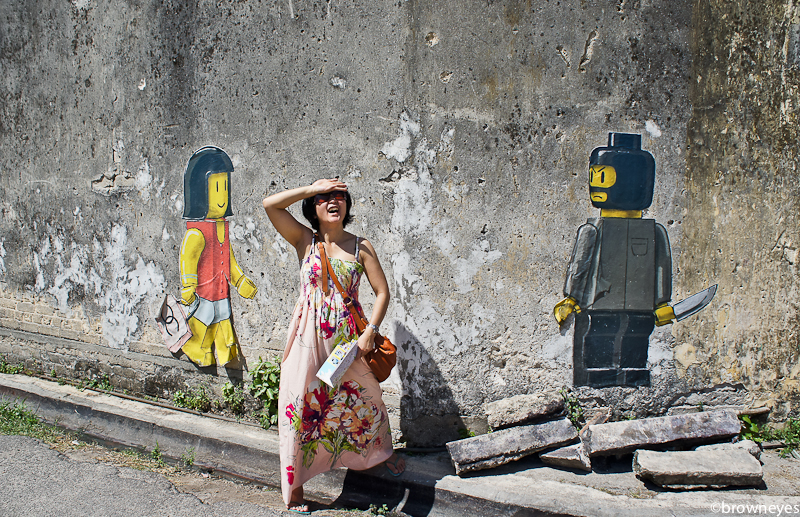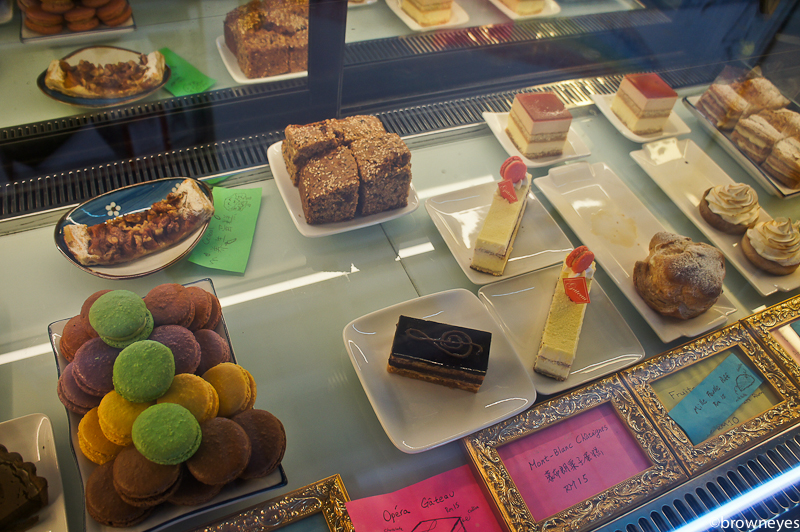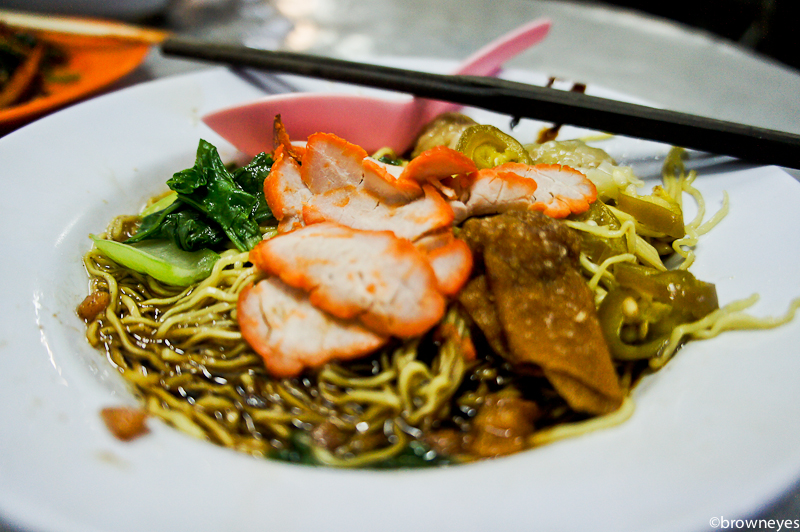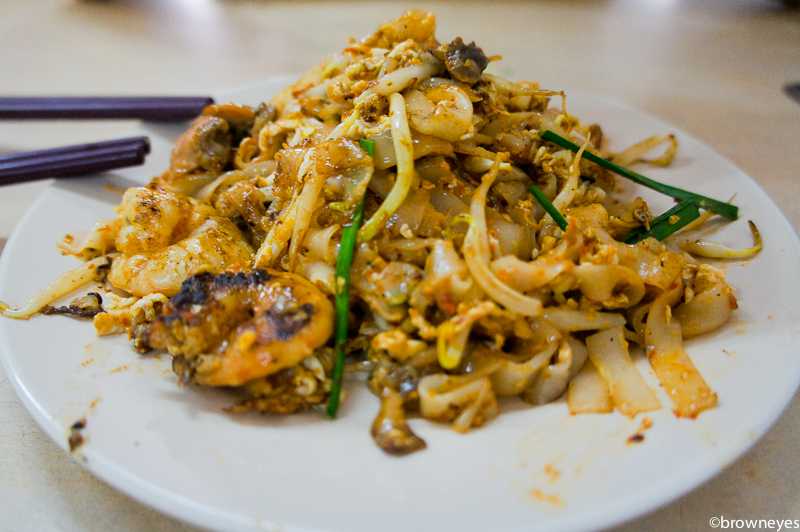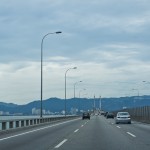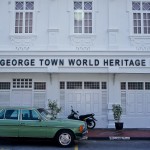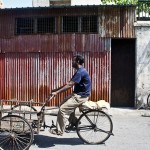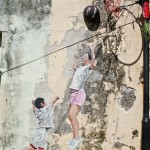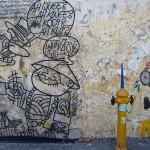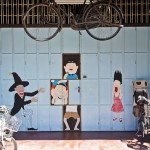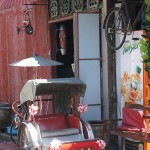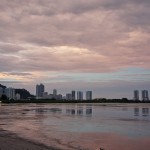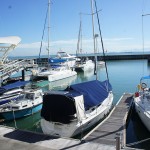(A delayed post on our trip to Albania in spring, April 2013)
Blue Eyes’ involvement in weighlifting photography brought us to Albania in spring. The European Weightlifting Championship 2013 was held in Tirana, Albania for the first time and Blue Eyes’ best friend, Tom was again representing Belgium. As we’ve not been to Albania before, we decided to arrive several days earlier before the competition to see a bit more of the country.
Albania boasts of two UNESCO World Heritage sites, which include its oldest towns of Berat and Gjirokaster. Both places were heavily influenced by Turkish culture, as they were once part of Turkey, and these are reflected by the Ottoman architecture that still exist until today.
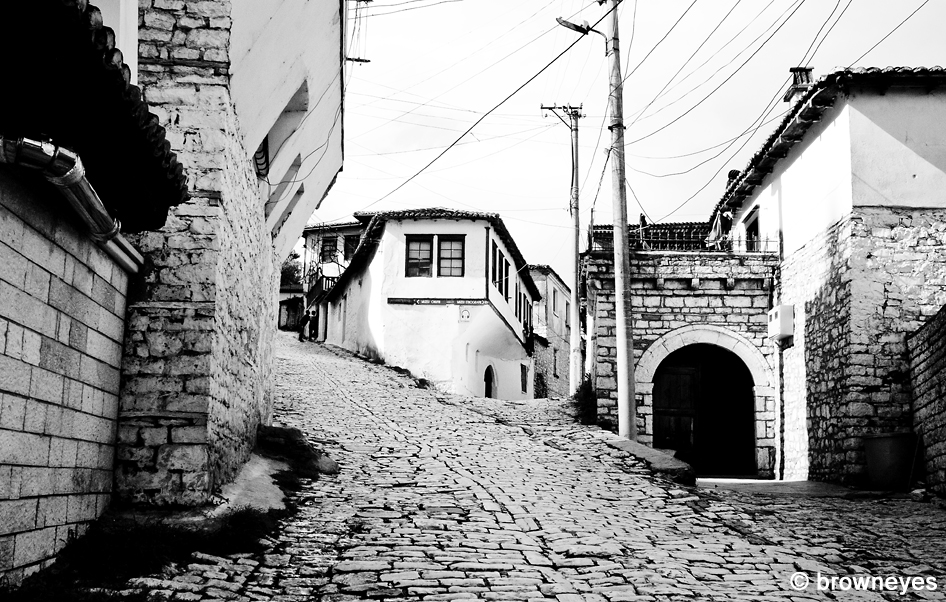
White streets and buildings, reflecting the Ottoman era
We arrived to Tirana first and stayed the night before departing for Berat. We had booked a flat in Tirana via Airbnb, our sorta go-to site whenever we’re staying more than 3 days in a place. Airbnb offers travellers like us the option of renting directly from houseowners, and for the cost similar to backpackers (or sometimes hotels), we get a cosy flat to ourselves. Anyway, our host in Tirana, Klodi is a postgraduate student in Germany and to help us with our stay at her flat, she has her sister to help out. Nora is a 20-something Albanian, and she and her husband help Klodi whenever there are visitors renting her flat.
Nora guided us the next morning to the bus station for our journey to Berat. While cities and towns in Albania are well connected, finding out the schedule of buses or furgons (local term for minivans) is not always easy as there’s no formally published information. At least not in English. The bus to Berat stopped many times along the way as it picked up passengers on the road. As a result, the trip took longer than expected – more than 3 hours!
When we arrived to Berat bus station in downtown Berat, we walked less than 10 minutes to Hotel Mangalemi, where we’d be staying the night. The hotel is the top rated accommodation on Tripadvisor and usually such ranking also means quite high cost, but considering that it’s still spring and not the peak tourist period, we got our double room for 30 euros per night, including breakfast (what a deal!).

Green door, Yellow jacket
As we arrived to Berat in the afternoon, we didn’t want to waste too much time looking for a restaurant so we decided to just have lunch at the hotel. And what a pleasant lunch it was! The kitchen serves mostly traditional Albanian cuisine, which is Mediterranean style. Blue Eyes took the eggplant in tomatoes sauce while I had the grilled chicken skewer with rice. We savoured our every bite, definitely one of our best meals in Albania!
After lunch, we carried our full stomach up the hill towards the historical Berat Castle. According to UNESCO website, the castle’s origin dated back to the 4th century BC although most of it was built in the 13th century. Berat is a historically militarily strategic city, which has been designated as a museum city by the Albanian government in the 1960s. The castle and its area, about 100 hectares, are currently home to a village of 100 households. Imagine having your home right in the middle of the castle, with huge stone walls! Quite unique isn’t it? As we climbed the hill, we breathed in the scenic view around us. The weather was kind to us too as it was a sunny, blue skies day with temperature ranging about 21C. Just perfect for sight-seeing! It cost 100 Leke (1 euro = 139 Leke) per person for the entrance fee.
The castle walls and its village took us about 2.5 hours to complete, and during the walk, a local villager met us and started sharing anecdotes of the place. We didn’t know if he’s offering us a guide or just trying to be hospitable but he’s such a comical fella that we didn’t try to stop him. We offered him beer as our sign of appreciation and he joined us for drinks at the terrace on top of the castle. As we approached the exit gate, he asked us for money for his “tour” and while we’ve appreciated him for offering interesting stories, I wished that he had been forefront with his intention so that I can at least have a chance to say “no”. We gave him some money anyway.
Next day after breakfast, we caught an early morning furgon to Gjirokaster and it took us about 2 hours to arrive. We found furgons to be the faster mode of transport as its smaller capacity than the bus means it stops less to pick up passengers. So long the minivan is full, it keeps going.

Walking through the historical castle, which was an important military fortress for rulers in the past
Gjirokaster, located in the Drinos river valley in southern Albania, has many outstanding two-story houses that were developed in the 17th century. There is also a bazaar, an 18th-century mosque and two churches of the same period (Source: UNESCO website here). From the furgon stop, we arranged for a taxi pick-up to our accommodation on the historical part of town.
We booked our accommodation at Kotoni B+B for 25 euros a night. The Kotoni house is 220 years old and 3 generations of Kotonis have lived in the building. The current Mr. Kotoni started the B&B business in 1991, soon after communism ended in the country. He and his wife lives upstairs while downstairs have been converted into rooms for travelers.
Mrs. Kotoni showed us the little shortcut from their place to the castle, which is about 4 minutes walk. We decided to have breakfast first and from Tripadvisor, we decided to check out this restaurant Kujtimi, which was also recommended by the Kotonis. I took some mussels while Blue Eyes had a chicken dish. They were flavourful but not memorable. The meal was inexpensive as we paid 1,400 Leke (~10 euros) for 2 persons.
We head towards the castle after lunch. According to UNESCO website, Gjirokastra was developed by major landowners. Around the ancient 13th century citadel, the town has houses with turrets (the Turkish kule) which are characteristic of the Balkans region. Gjirokastra contains several remarkable examples of houses of this type, which date from the 17th century, but also more elaborate examples dating from the early 19th century.
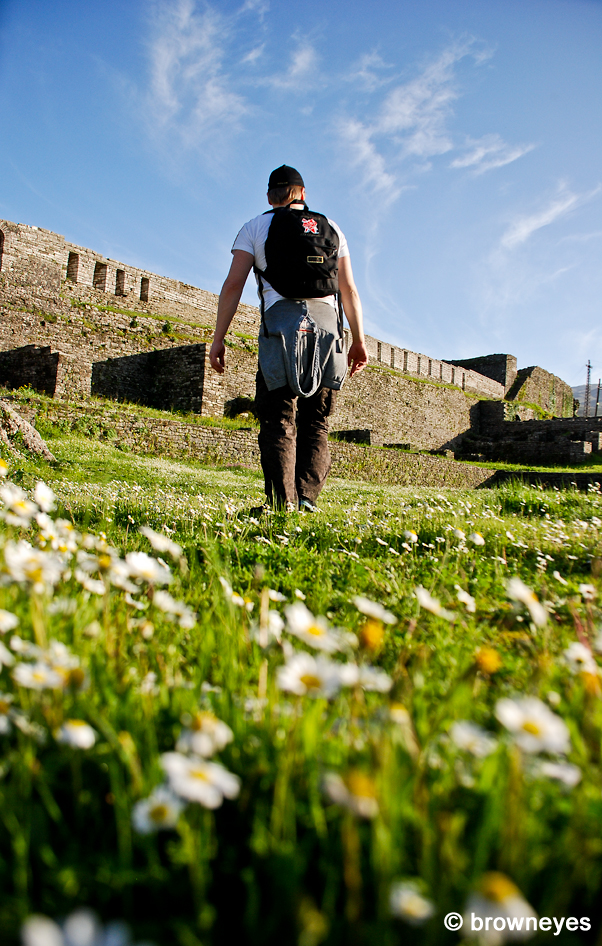
Blue Eyes having a spring walk in the castle
In comparison, I liked Berat castle more as it felt cozier and the lil’ village was an unique touch. The Gjirokaster castle is bigger and has a clock tower, a huge square where they hold concerts in summer, as well as a museum. We skipped the museum as I’m not a fan, and decided to just sit on the high castle walls and watched the world below us. One interesting observation we made was the number of men sitting at cafes at almost any time of the day. There’s seriously hardly any women in sight! In fact, I got some stares when I was walking with Blue Eyes around 8-ish to buy some groceries at a nearby shop.
Another observation is the huge number of old models of Mercedes found on the street. Albanians apparently loved the German brand, that aside, apparently many were also sourced illegally into the country (articles here and here). Blue Eyes noticed that many buildings were incomplete, ie. construction seemed to be half-way done, similar to the ones we’ve seen in Peru. Nevertheless, many of the unfinished buildings are already in use ie. there are occupants living there. If the theory goes, the unfinished buildings could possibly be due to avoid paying the full taxes for completed buildings. Didn’t get to ask the locals, so no way to confirm this.
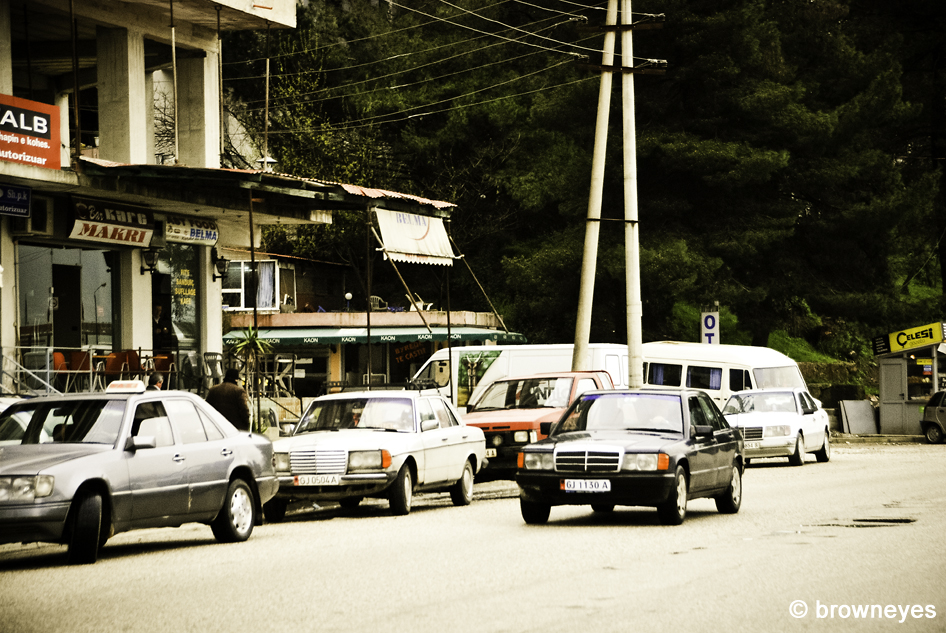
We counted at least 8 Mercs were parked on this street in early morning
Next day it was time to return to the city and we took the furgon to Durres to visit Tom during his training. Durres is the beach area that is within 45mins from Tirana and it’s an attraction for both locals and tourists as it’s easily accessible from Tirana. However, we read that it’s advisable not to swim in the sea as the water quality is doubtful (see here).
In the following days when Blue Eyes stayed at the competition hall for his photography, I took time off to visit the city centre and checked out several key sights. Most of the significant historical sights are within the city centre area. The Skanderbeg Square is pretty much the centre point. It was named after the national hero Skanderbeg. From there, I walked along the Bulevardi Dëshmorët e Kombit (aka “Boulevard of the Martyrs”), where most of the sights are located. The other end of the square is the Polytechnic University and where Mother Teresa Square is located.
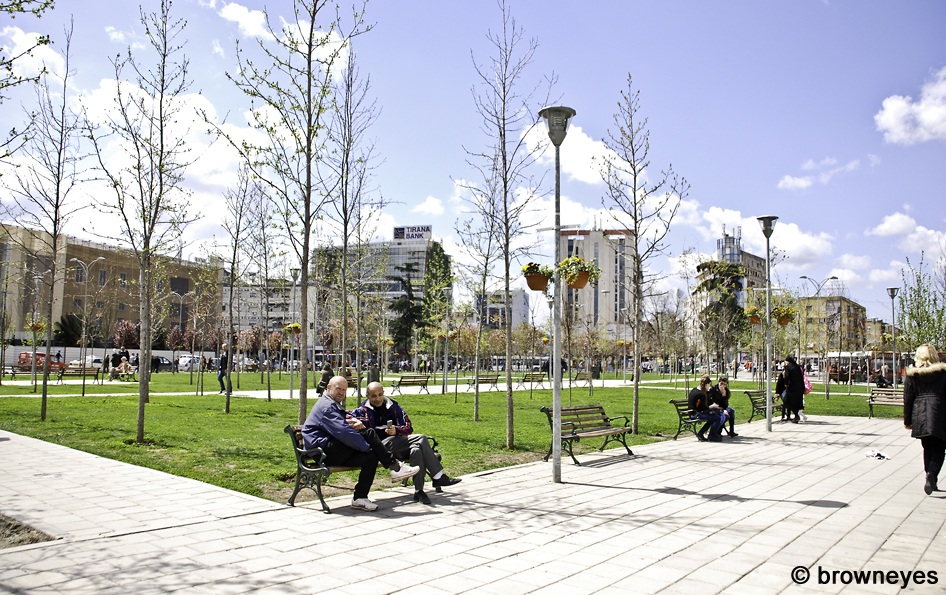
The Skanderbeg Square is surrounded by historically significant Albanian buildings
There are many cafes and restaurants in Tirana and while we didn’t try all the ones recommended on Tripadvisor, we did however have dinner at the Steakhouse at Taiwan, the name of a commercial building in the centre of Rinia Park. My review of the restaurant on Tripadvisor is found here. In addition, I had a number of coffee sessions in the city, sitting at different cafes people-watching.
We also cooked in the flat and bought grocery from the supermarket and local grocers. Local fresh produce is abundant and oh, so cheap compared to Finland! Found out that Albania is famous for its olives. We tried some while dining out but I didn’t find it much different with olives from elsewhere. Having said that, we got a bottle of olive oil for home 🙂
Albania, like many others, has been highly misunderstood. There may still be reasons for its mafia reputations but the country itself, or at least the parts that we’ve been and seen, is beautiful and unique. It has good ingredients for tourism boost – affordability, beautiful nature, friendly people and delicious cuisines. Now if only more people take the off-the-beaten road 🙂
